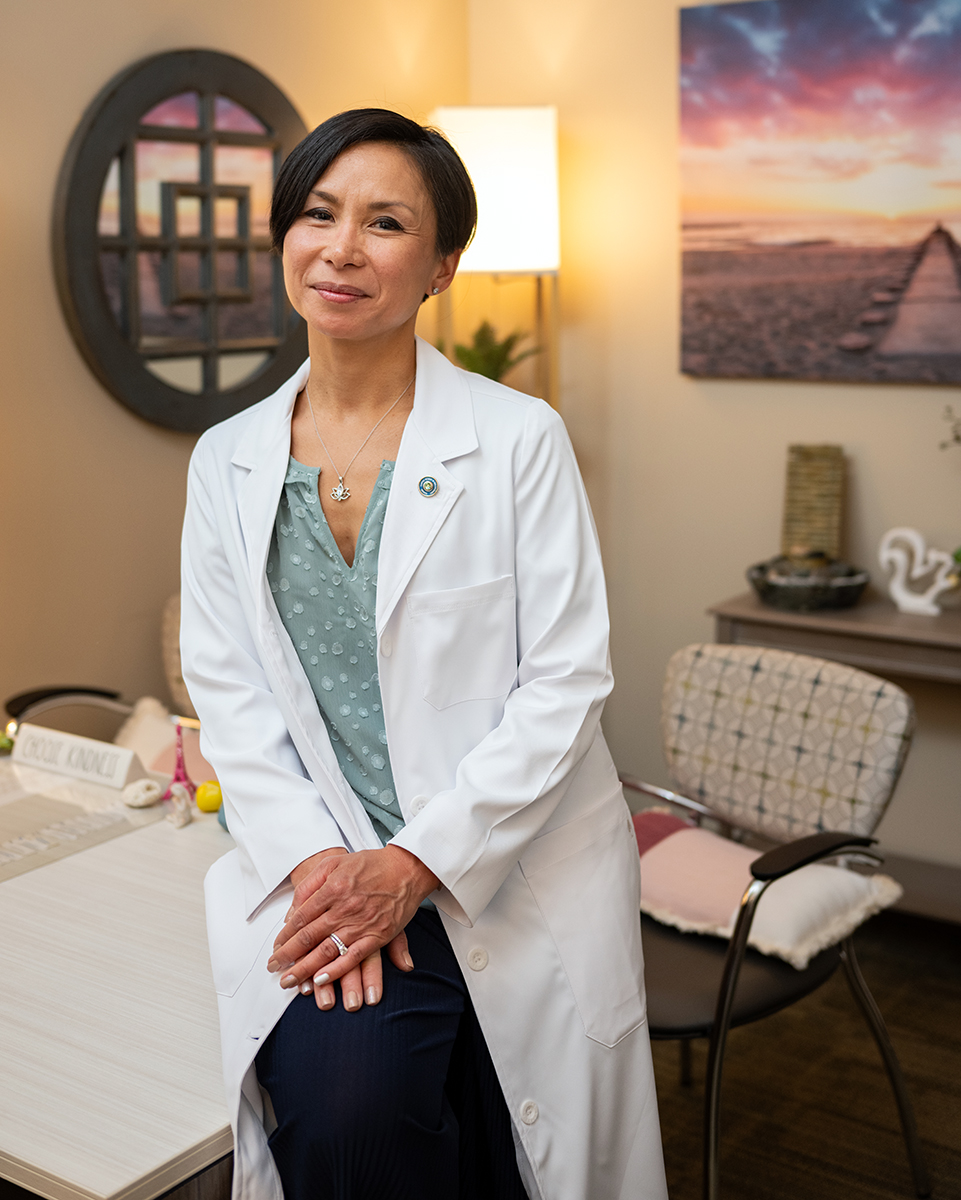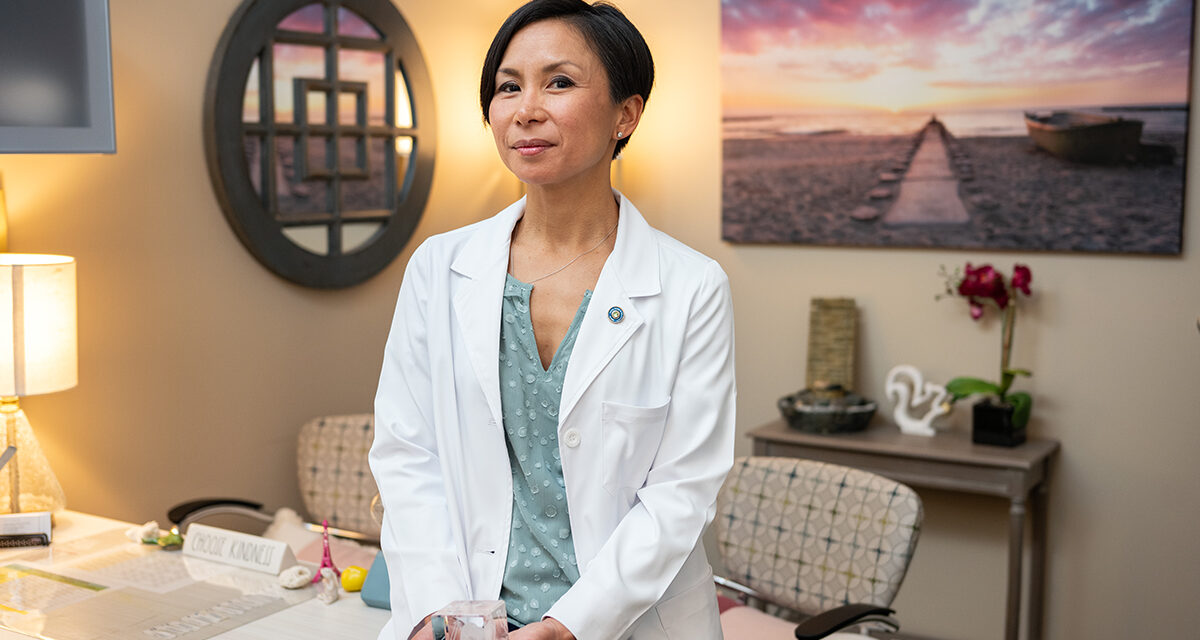Tara VanHise, DO, is leading Capital Health’s charge to help clinicians fight burnout. In this special report, Real Woman dives into THRIVE, the program that aims to put more scaffolding around clinicians so they can care for their own needs and those of their patients.
Not the four children or husband she loves, the staff she adored, the patients she fought for, or her decades-long career as a physician could keep Dr. Anne Whalen’s stomach from roiling the moment she crossed the threshold into work each day. For many years, she navigated the rigors of being a primary care physician while raising her family and even found room to work part-time as a hospice director. It was mentally challenging, physically demanding, and emotionally draining, but each role felt rewarding and meaningful for most of her career. It is important work, she thought, and she really did love it.
But in recent years her work environment was becoming increasingly toxic, and before she knew it, Dr. Whalen found herself dreading going to work each day. “It felt like the corporate world had put so many demands on physicians that I couldn’t be successful in doing my job well. I was seeing patients every 15 to 20 minutes, not getting a lunch break, and doing 25 hours of paperwork. At that point, I would have to decide which weekend day I would spend with my family and which day I would spend doing paperwork,” she says. “It was soul-sucking.”
While Dr. Whalen had heard of physician burnout and even attended a conference that addressed it, she began to realize that’s what she was experiencing when her family brought her attention to some worrying signs. “A few years ago, my daughter called from college on Mother’s Day, and I just broke down crying. She said, ‘Mom, what’s going on? This is so not like you,’” Dr. Whalen recalls. “I’m normally an upbeat person, but I was so beaten down. That’s why I moved to Capital Health Primary Care in Ewing, NJ, with my medical partner of 20 years, and it’s been a game changer.”
Dr. Whalen is riding a wave of burnout alongside physicians worldwide. Clinician mental health is facing a crisis, with high rates of depression, anxiety, and suicidal ideation, often exacerbated by systemic issues and stigma within the medical community. We’re in a crucial moment, one in which hospital systems and even medical schools are being called upon to implement strategies to address physician well-being.
Here’s what we know: Each day, approximately one physician dies by suicide, which is twice the rate of the public. Residents and fellows often work 80 hours a week while facing crippling student debt. Suicide is the leading cause of death among male residents, and the second-leading cause of death among female residents, only behind cancer.
While burnout isn’t a phenomenon that’s exclusive to the medical profession, its impact in health care cannot be understated. It’s crucial for hospital systems and medical schools to implement a set of established, evidence-based strategies to address the crisis in physician well-being, a team from the Medical University of South Carolina and the University of Michigan wrote in an article in the New England Journal of Medicine titled “Burnout, Depression, and Diminished Well-Being Among Physicians,” published last fall.
Capital Health is doing just that. An effort led by Tara VanHise, DO, called THRIVE (Together, Healthy, Resilient, Innovative, Visionary, and Empowered) is still in relatively early stages, but the plan is cohesive and moving forward with clarity of purpose. Joshua Eisenberg, MD, a vascular surgeon and chief physician executive of Capital Health Medical Group, says THRIVE is so important because health care is driven by labor. “We’re not an auto manufacturing plant, for example, so if the workforce isn’t happy, it’s a huge problem,” he says. “It’s 100 percent mission critical to create a sustainable work environment.”
With the THRIVE program, Dr. VanHise wants to give clinicians a voice, create a foundation of support, and create a system-wide environment that helps physicians harmonize all the various parts of their jobs and their lives to the best of their abilities. Here’s an inside look at the plan and how it impacts all of us.
It was clear to me that physicians really care about patients, but in most cases, nobody’s really taking care of us.

THRIVE introduced family-friendly events like ice skating to give clinicians the chance to spend time with their coworkers and their families outside the work environment.
For 2023, 48.2% of physicians reported experiencing at least one symptom of burnout. This is the first time the rate has been below 50% since 2020.

“It’s 100 percent mission critical to create a sustainable work environment.”
Understanding Burnout
Dr. VanHise is the engine behind THRIVE. Now in her tenth year at Capital Health Primary Care in Ewing, she was first introduced to the concept of physician burnout in 2017 during a primary care conference for the American College of Osteopathic Family Medicine. “I attended a lecture on physician burnout, and I felt like it was important. I came back from the conference and began inquiring about what Capital Health had in place for physician well-being,” Dr. VanHise recalls. “It was clear to me that physicians really care about patients, but in most cases, nobody’s really taking care of us,” she says.
Dr. VanHise teamed up with a Capital Health psychiatrist to start a committee for physician wellness. But those early plans were put on pause when, in 2020, the COVID-19 pandemic overshadowed virtually everything else. At that time, the physician burnout rate skyrocketed to a record-high 62.8 percent in 2021, according to survey data from the American Medical Association. Dr. VanHise renewed her efforts to address physician wellness, and she took the Quadruple Aim Leadership program with Dr. Dike Drummond, CEO of thehappymd.com, a wellness and leadership training course to fully equip her for creating a sustainable program at Capital Health.
It’s called Quadruple Aim because there are four main areas of focus: education, culture and connection (social interaction), quality improvement (efficiency), and crisis management. “The reason why there are four aims is because you can’t just do one thing and think you’re going to fix burnout,” Dr. VanHise says. “You must really address all the other areas to make it whole.”
However, getting her arms around the issue also meant understanding what’s causing physicians to feel burned out. The most recent studies show two major drivers of burnout. The first is not feeling valued by their organization or employer, and the second is spending time doing the “wrong type” of work (non-clinical), which includes hours of administrative tasks, including updating electronic medical records, completing charts, portal messaging, reviewing documents, and more.
Addressing the Problems
Understanding what the individual issues are that cause burnout for their own doctors has been a process for Capital Health. “We’ve learned there’s not a simple answer to any of these issues, that it’s very individualized,” says. Dr. Eisenberg. “One of our goals is to help people realize we are here to help look for solutions to the problem.”
Dr. VanHise says THRIVE is focused on both individual and organization efforts. For individuals, the program is aimed at educating and providing clinicians with tools to help with self-care and resilience. To that end, THRIVE introduced family-friendly events like ice skating to give clinicians the chance to spend time with their coworkers and their families outside the work environment.
The organizational efforts start with collecting data through the use of the Mayo Well-Being Index self-assessment, a validated tool to assess drivers of distress. While the initial data is proving helpful to create solutions and provide tailored support, it’s important that clinicians buy in and share information as openly as possible. “Some may feel there’s going to be a sense of retaliation if they share, so that’s an obstacle,” says Dr. Eisenberg. “I think they need to hear that we are truly looking for solutions, and that will take time.”
And Dr. VanHise is willing to put in the time because she knows how important it is to the hospital system and its patients. “Capital Health cares enough about their doctors to support this program so they can give patients the best possible care,” she says. “Happy doctors have happy patients.” she says.






